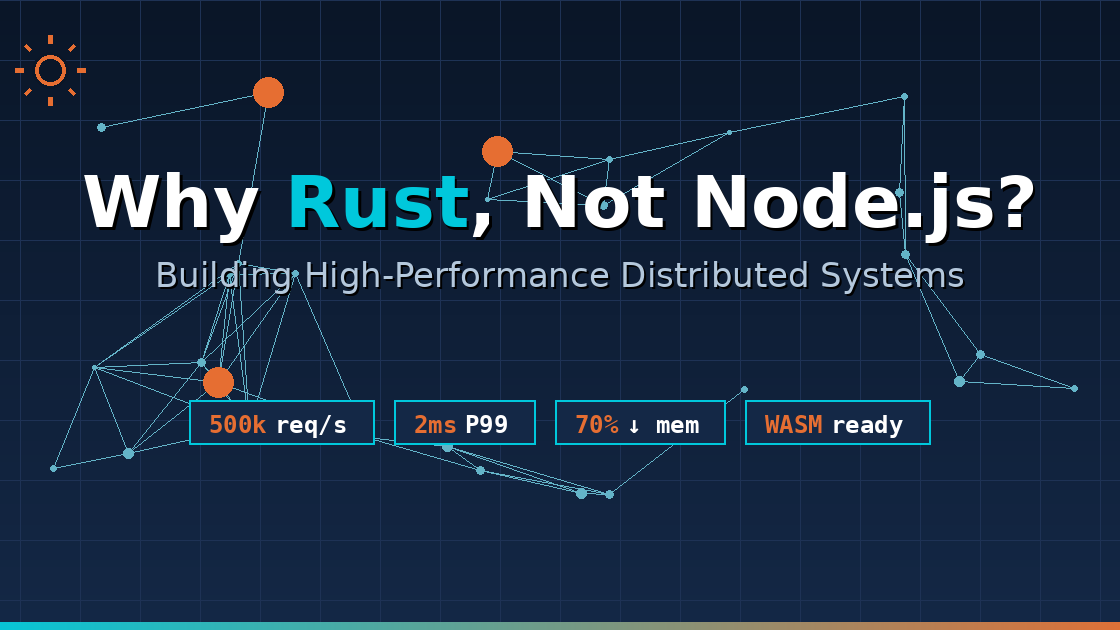NodeJS used to be the Obvious Choice
For years, NodeJS has been the default for building web applications. It delivers on some undeniable strengths:
One language, everywhere JavaScript powers the frontend, and with NodeJS you extend that same language to the backend. No context switching.
No compile step Write code, run it immediately. Iteration is fast and learning frictionless.
Easy to learn JavaScript has a low barrier to entry. A developer can get productive in days.
Rich ecosystem NPM is massive. Teams move quickly by standing on the shoulders of thousands of open-source packages.
Good enough scalability With async I/O and event-driven design, NodeJS handles web traffic at scale for most use cases.
🚀 Why developers love NodeJS: Quick to learn, fast to build, scales well enough.
Rust Changed Everything
Rust is different. It is a systems programming language first, a web application tool second. Its value lies in:
Performance Native execution and zero-cost abstractions mean Rust often runs orders of magnitude faster than NodeJS.
Memory safety without garbage collection Rust enforces correctness at compile time. Entire classes of runtime bugs—null pointer issues, buffer overflows, data races—are eliminated.
Strong typing The compiler is strict, but the guarantees are worth it. Your code behaves as intended under load.
Concurrency Rust’s ownership model enables safe and predictable parallelism at scale.
⚡ Rust tradeoff: steeper learning curve, but the reward is unmatched speed, safety, and stability.
Bridging the Gap with LLMs
I didn’t switch to Rust blindly. As a senior technologist and architect, I knew the application I wanted to build would stretch NodeJS past its comfort zone.
The goal: a horizontally scalable API capable of 100 million reads and writes per second.
With NodeJS, that would have required an order of magnitude more infrastructure. With Rust, it was possible—if written correctly.
This is where large language models became essential. Not as a replacement for my skills, but as a force multiplier:
I knew what I wanted to build and could articulate it precisely to the LLM.
I could validate its output, because I understood the architecture.
I designed tests that confirmed each generated function met the required objectives.
I built benchmarks to measure performance and guide optimizations.
I created a CI/CD pipeline that enforced stability, running load tests on every feature before release.
🧩 Key insight: The LLM was not the engineer—it was an accelerator. My expertise set the guardrails.
The Real Lesson
The real power of LLMs is not in what they can do alone, but in how much more a skilled engineer can do with them.
Rust gave me performance and stability.
LLMs gave me speed and leverage.
Together, they enabled me to build something that would have been nearly impossible in NodeJS without massive infrastructure costs.
I moved from NodeJS to Rust, and I’m not looking back.


